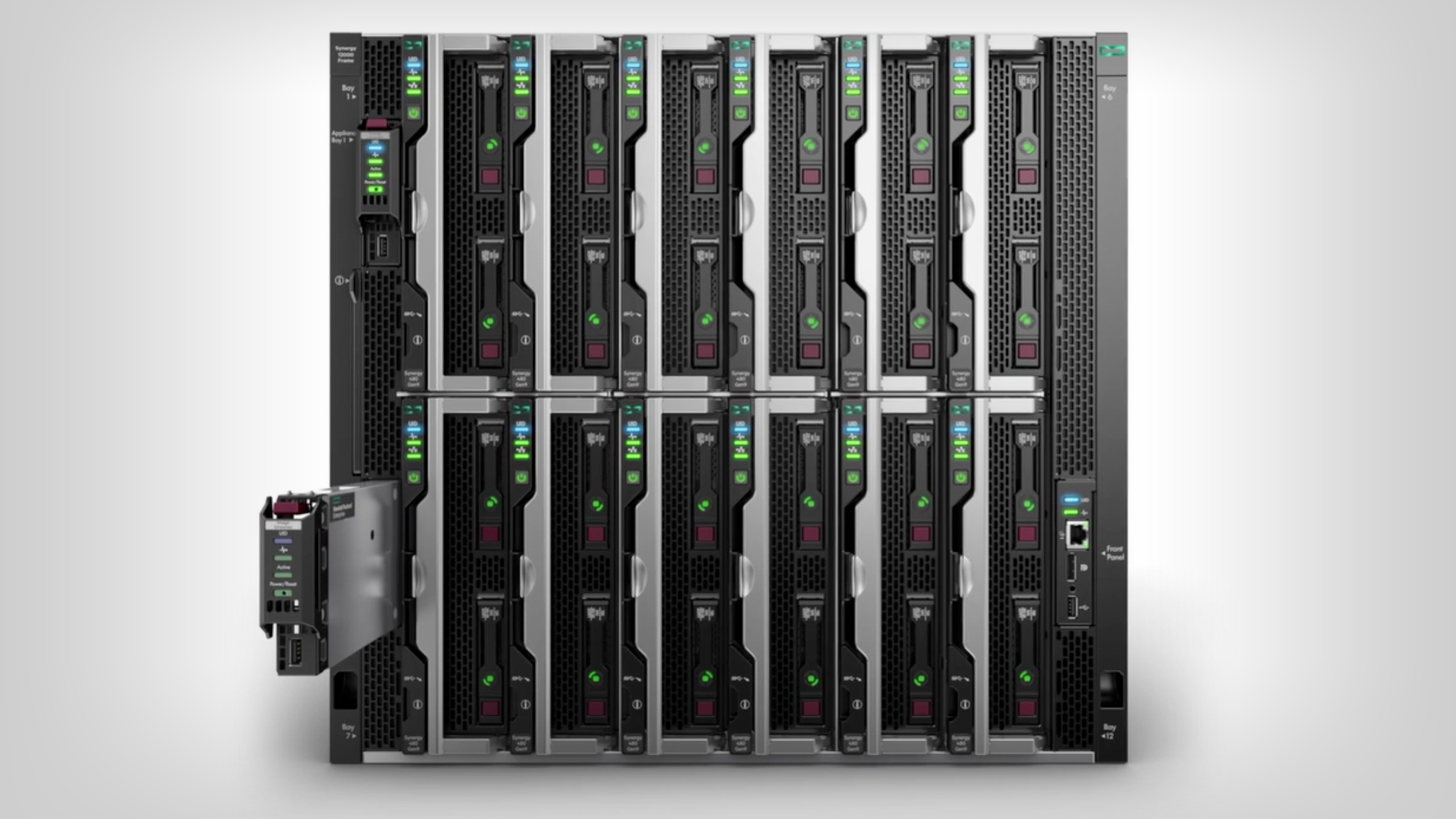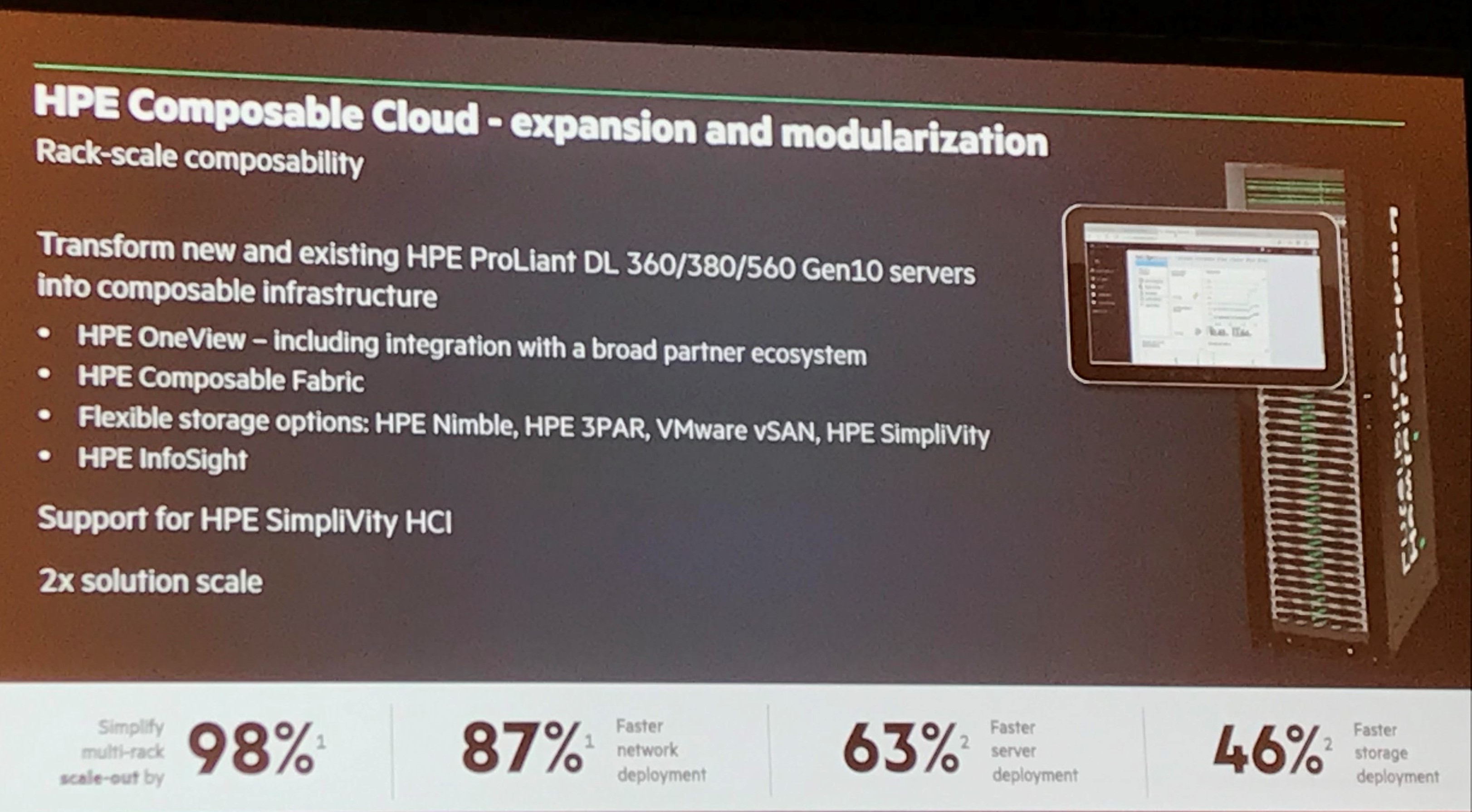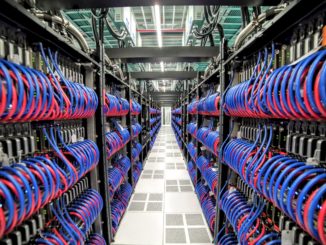
For enterprises that want to take their compute, storage and networking, create fluid pools of datacenter resources and then use software to deploy and use them as needed, Hewlett Packard Enterprise for the past few years have offered them its Synergy composable appliances that include all that hardware capabilities as well as software like OneView for IT management. The idea is to give customers a way to pull the resources from the pool that they need to run particular workloads and once the job was done, return those resources back into the pool.
HPE has been in the composable game the longest – the vendor introduced its first Synergy system in December 2015 – but others are now pushing into the space. In May 2018, Dell EMC introduced the PowerEdge MX as the cornerstone of its Kinetic composable strategy. Juniper Networks late last year bought HTBase and its composable infrastructure capabilities, while some smaller vendors, like DriveScale, also are trying to gain traction.
For HPE, Synergy has proved to be worth the effort. According to the company, Synergy is a $1.5 billion business that is growing at 78 percent and has more than 3,000 customers. In November 2018, the vendor announced that it was extending its composability capabilities in a limited way beyond Synergy and into ProLiant rack servers, offering two packaged appliances around VMware vSAN and Red Hat OpenShift workloads.
“We wanted to make sure it was a hardened product,” Paul Miller, vice president of marketing for HPE’s Converged Data Center Infrastructure business, tells The Next Platform at this week’s HPE Discover show in Las Vegas. “It was confined to those two use cases and PointNext did all the installation and made sure everything was perfect and booted up.” PointNext is the remaining services business of HPE after it sold off the bulk of it.
Now with that experience in hand, HPE is expanding its composable portfolio to include ProLiant DL360, DL380 and DL560 (pictured below) Gen 10 rack servers and is working to bring its SimpliVity hyperconverged infrastructure lineup into the composable fold. In bringing composability to the ProLiant rack systems, the vendor leveraged enhancements to its Composable Cloud private cloud platform built on OneView and the Composable Fabric networking offering based on technology inherited by HPE through its Plexxi acquisition a year ago.
The company chose the Gen 10 ProLiants because of advancements it had made to the Integrated Lights Out (iLO) firmware and other capabilities and because the systems have been on the market for more than two years and have been widely adopted by enterprises, according to Miller. Off the strength of its limited efforts over the past several months to bring composability to rack systems, it was now a good time to broaden its use.
“Since that time, we gained confidence, we moved the R&D processes together and now, with Composable Cloud, you can go into an existing datacenter – which is a huge opportunity – and transform that into composable,” Miller says. “[You can] pick your workload and any integration with the APIs into OneView. It has the Composable Fabric, which stitches together all the rack servers into a common pool of resources, and then through OneView you can deploy them.”
Customers that want to leverage their existing ProLiant Gen 10 rack systems can put the Plexxi-based Composable Fabric into the top-of-rack switches, establishing the network fabric. Then OneView can be installed on the servers.
“With Synergy, the composer – which was where OneView sat to compose the workloads and orchestrated the compute and the fabric and the storage and the workload – now is in a VM,” Miller says. “Instead of being in a piece of hardware, it’s in a VM. You can have it replicated and have it in a VM in one server and another one [elsewhere] – anywhere in the datacenter, really – for failover and stuff, so now that becomes how you compose. You load OneView on all your servers and designate one as the composer server – the key management server – and now you can use a template just like you do in Synergy to deploy the compute, the fabric and the storage and the workloads. It supports SAN-attached storage, whatever we support through ProLiant, it supports Nimble, it supports vSAN and you put a pool of SimpliVity in there.”
HPE can’t yet to “the full composing of SimpliVity. It’s more of a pool that you can see and is part of the same fabric, but we’re still working on how you actually compose hyperconverged workloads. But all your other workloads – vSAN, bare-metal apps like SAP, Oracle, SQL, containers – all run within that structure.”
Many enterprises already have many of the tools needed to bring composability to their rack systems already in their datacenters, he said. Along with the ProLiant servers, there is a OneView install base of about 1.3 million licenses – plus many more companies using the free download version – and Plexxi’s technology has been around for almost nine years. HPE’s use of Plexxi’s technology also is expanding.
“Plexxi now can go beyond the datacenter walls,” Miller says. “Now you can have multiple datacenters federated together with Plexxi in each datacenter through the fabric. That’s a use case for people who want to move some workloads around a little more often and just have greater disaster tolerance plans. Now you [also] can put Plexxi at the end of a row of Synergy racks or at the top of set of Synergy racks and we connect through our fabric, Virtual Connect, into that. We’re making that available. We go to market with Plexxi as a standalone, in Composable Cloud and in Synergy. It’s really a first step with Plexxi at the top of the rack. We’ll take that technology over time and embed it into Synergy as well.”
The expansion of composability into rack systems means that the computing model is coming into the mainstream, he said.
“It’s no longer an appliance,” Miller says. “It’s becoming a mainstream technology that people can [use] to transform their datacenter. They don’t have to throw anything away. The investment protection we’re giving customers is phenomenal. Now they can get better automation, better capabilities, flattening the network [and] better speed of deployment without have to throw their existing gear away.”
It also will be available as a service, part of HPE’s larger plan to offer all of its product portfolio as a service by 2022.
Customers using Synergy were able to reduce IT infrastructure costs by 25 percent, use 71 percent less staff time per server deployment and see a 30 percent bump in application team productivity, according to the vendor. Going forward, HPE is going to “focus a lot on how we make workloads more composable,” Miller said. “We put SimpliVity within it and you can see SimpliVity – it’s attached to the fabric – but you’re not composing hyperconverged yet. That’s what we want to do, compose hyperconverged as a workload. We’re going to focus on unique workloads that you can instantaneously compose.”







Be the first to comment